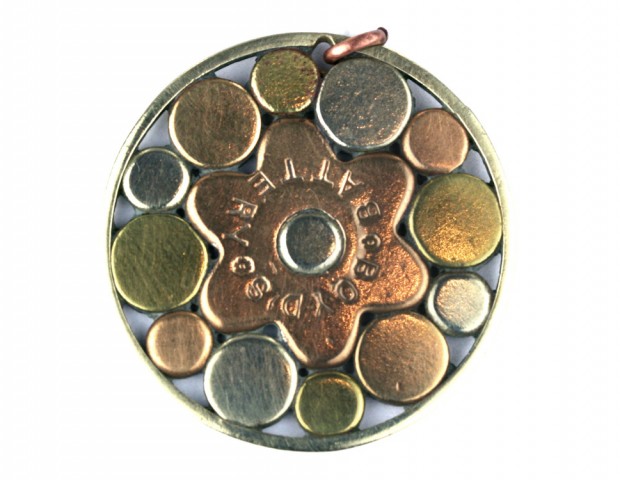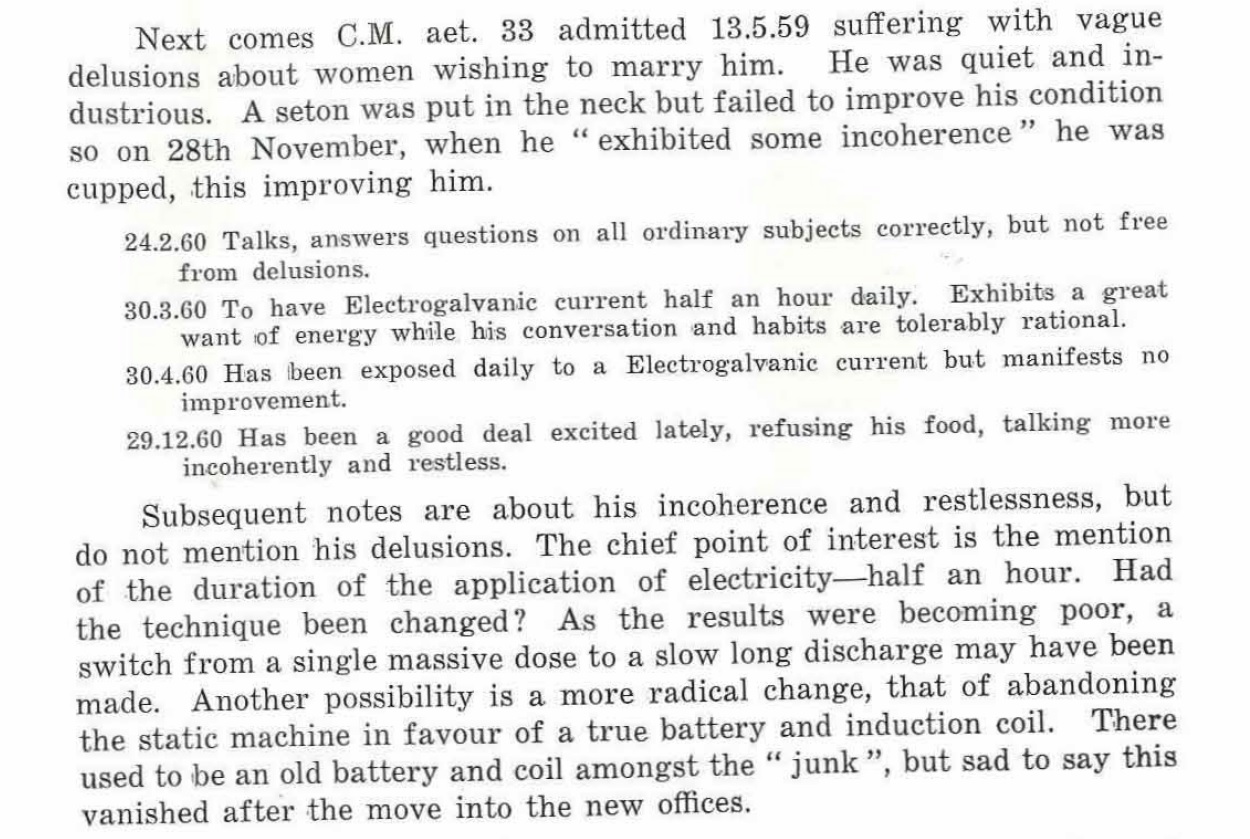Boyd’s Battery Galvanic Pendant, used as a personal delivery device to cure many ailments.
The Galvanic battery has had a mixed history as a medical device. Many items were sold that had huge medical claims and benefits in the domestic market during the early 1900’s, however most had little to no evidence to support the claims being made about their properties.
You could cure or aid conditions such as pelvic floor disorders, conditions of the eye and you could derive some benefit in reducing nasal discharge. The batteries came in different forms and could be attached to the body by different methods. One could slip a couple of batteries into your shoes, put on the custom made pendant or you could also wear a set of custom made spectacles, all would deliver a “therapeutic dose of electricity”. I’m unsure where the user with “pelvic floor conditions” would attach the batteries!
As a professional medical tool in the mid to late 1800 there was some evidence of benefit, particularly for some conditions. Despite this evidence it was also clear that experimenting took place and treatments were also used to punish or force desirable change in patients at Willow Court.
Doses appeared to change from short shocks to “half an hour under the Galvanic Battery” and the history books are unclear about how this was administered. Some suggest that they would be done with the knee and hip baths and there is also confusion with the name of the treatment at times in patient records, some refer to Galvanic Battery and on other occasions Magnetic Electricity. The most likely reason for this confusion could be the people writing reports not knowing what the machine was actually called. It must be remembered that most of the staff were convicts and ex-patients at this time and the literacy skills low.
Below we have an exert from “The History of Lachlan Park” by Gavin Murray Crabbe. He discusses the patient records of C. M. who was admitted in 1859. He is subjected to the Battery for half an hour sessions daily. Dr Crabbe is unclear about the change of dose and tries to put together the artifacts that were found in the Barracks before the completion of his book to piece together all possibilities that could explain if we were talking about different machines or simply doctors taking different approaches.
Some reaction to the treatment were not expected as described below with patient J. B. in 1871.
It was very clear from the reports on patients files that the threat of the “battery” was often enough for patient who, were able to cover their symptoms, to do so to avoid the unpleasant experience.
There are some great records of treatments in the 1800’s and archive files are available to explore. There are also some periods of time, under different Doctors, at the Hospital that record keeping was poor, and so our available history also suffers. The medical staff at the time were required to manage the hospital and all patients, often numbering 200 – 300. At times the records indicate there was only one doctor employed.



